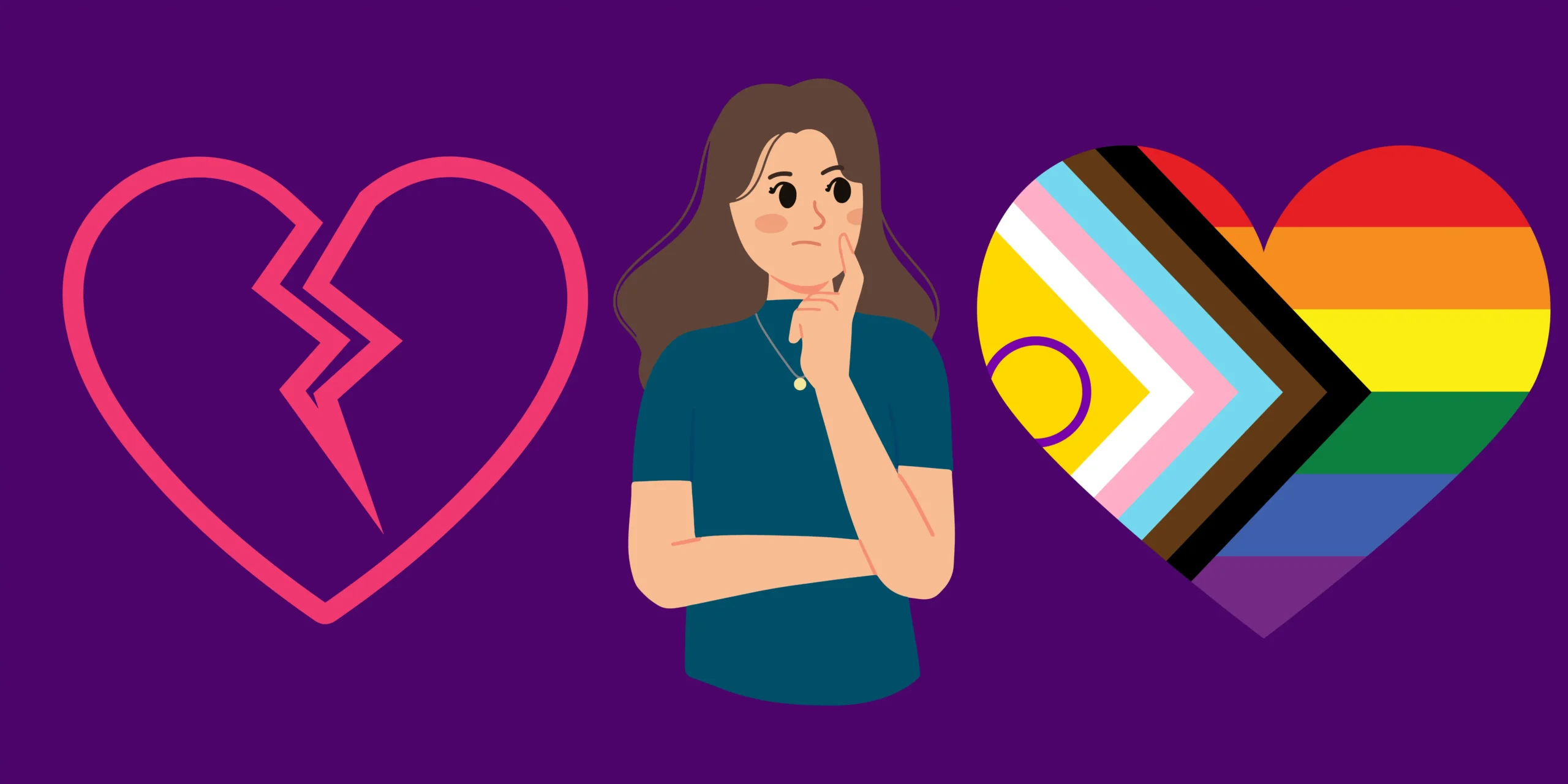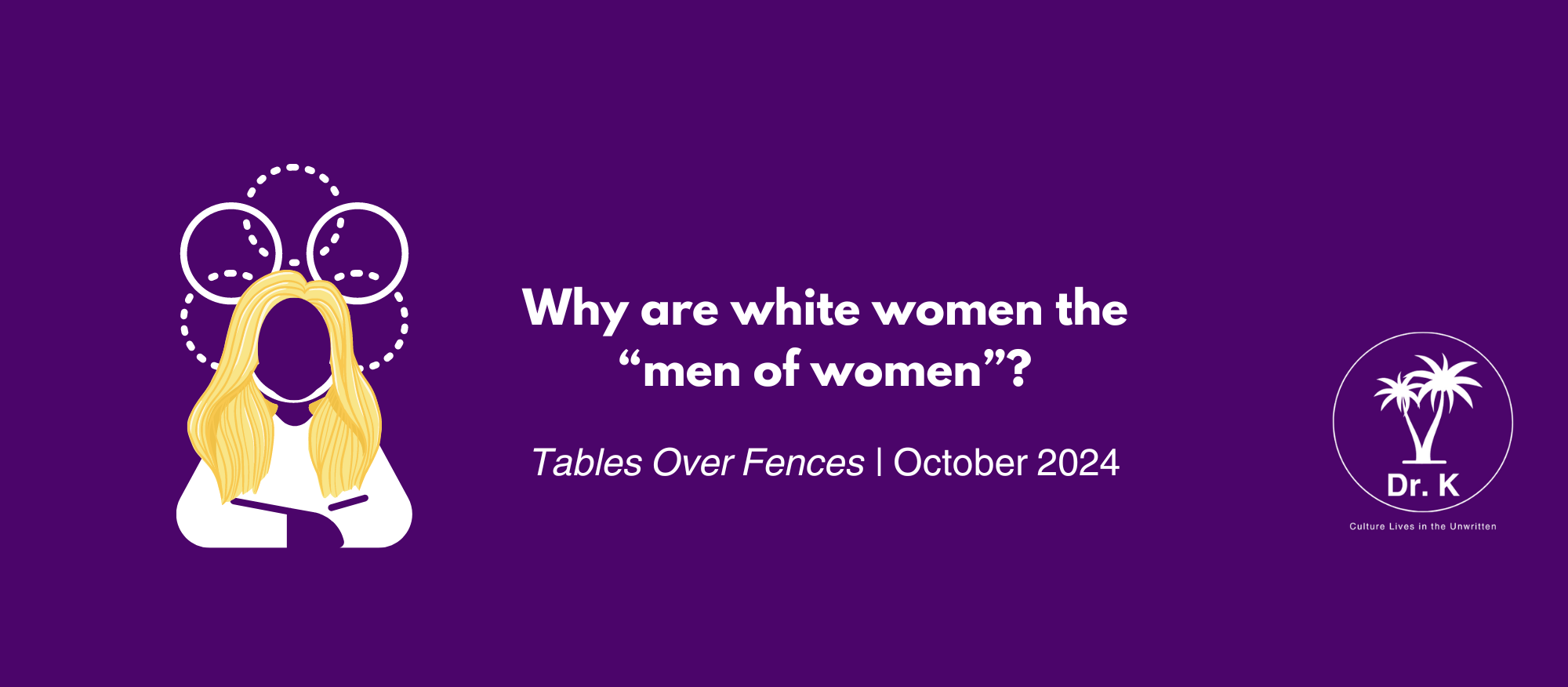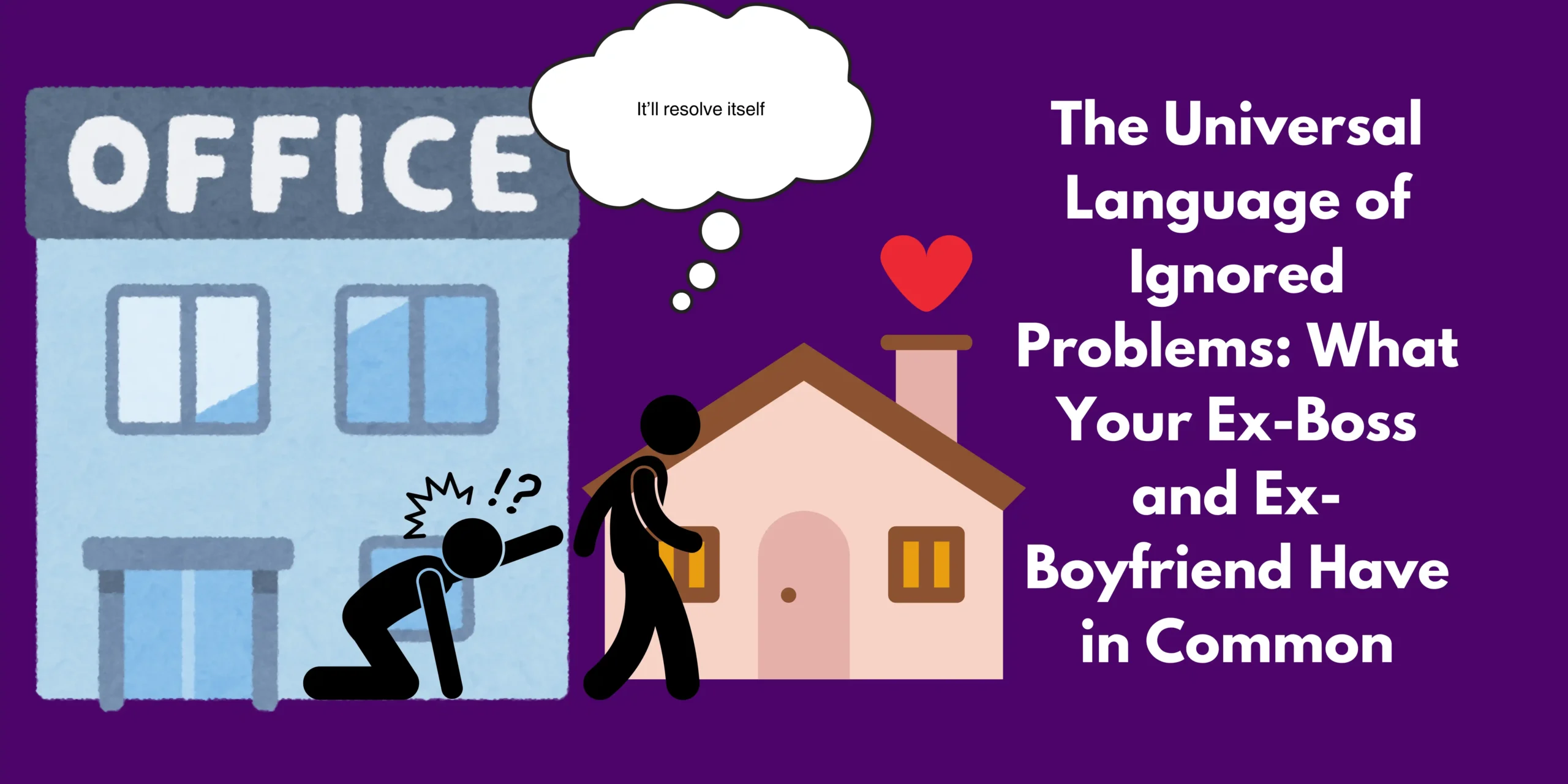Unlearning Homophobia, Learning Inclusion: A Leader’s Journey Toward a More Equitable Workplace
2 years ago

It’s Pride Month, and with that comes a lot of businesses hanging rainbow flags and/or posting them online. Public support is great, but as a leader creating a truly inclusive workplace where LGBTQIA+ employees feel welcomed, respected, and able to bring their full selves to work can be more challenging. However, it’s worth it because not only the right thing to do – it’s also good for business. Companies with more diverse and inclusive cultures see higher employee engagement, productivity, and innovation. Many of us think we are inclusive, but in my case, I learned I was not. I was homophobic.
For most of my life, I did not understand what “homophobia” even meant. All of the other “bad words” were an “ism” — racism, sexism, ableism, etc. (not that I really knew what any of those meant either). But “phobia” implied fear, and I had never been afraid that there was a lesbian hiding under my bed!
I was raised in a deeply religious household (this is not an anti-religion post. I know many religious people. I am taking ownership in this blog that I took it too far, not that all religion is bad). Our entire lives revolved around this religion. When I earned my driver’s license as a teen, I took the family van to daily church services whenever I could. I was bought in. And that religion told me it was a sin to be homosexual. And while I never questioned my own heterosexuality, that always bothered me. Why would it matter? But I was bought into the arguments that had been programmed into me:
- It’s unnatural, just look, homosexual couples can’t “naturally” reproduce.
- It violates the structure of everything else, which should be man and woman.
- Everything will descend into chaos if we make space for this (i.e., what will we do if gay couples can marry and obtain the same tax cuts that heterosexual couples receive?)
I didn’t question it too seriously because the ultimate idea was that God didn’t like it. And since God knew better, so who was I to question?
Despite progress, 46% of LGBTQIA+ workers say they are closeted at work, often out of fear of discrimination. One in 5 have experienced discrimination based on sexual orientation or gender identity in the past year (HRC Foundation survey). Non-inclusive workplace environments are documented to negatively impact the mental health of LGBTQ workers, while healthy cultures are associated with increased job and life satisfaction (more employer and employee wins!).
In my pre-IO psych life, I didn’t even know all of this. However, when I moved to university, a person in my dorm pod was a gay man, and I really liked him. I learned he was involved with the campus Pride group and that they were campaigning for equal marriage rights. And I was astounded. Because I had never in my life been exposed to anyone trying to change that law. I had never even considered to question that the law could be changed.
I had never questioned the rules. I was accepting the rules without questioning who wrote them, who benefitted from them, and who they harmed. I was afraid of questioning God, instead of questioning what I had been told about God and why. And I realized that’s really what I was afraid of, of not having the support of an institution that told me what I should think and validated what I thought by surrounding me with similar thinkers. I wasn’t homophobic, I was thinking-for-myself phobic. I was not-having-the-approval-of-an-institution phobic. Because if one thing my church told me wasn’t true…could there be other things as well? Would my whole life unravel?
I wasn’t homophobic, I was thinking-for-myself phobic. I was not-having-the-approval-of-an-institution phobic.
While I was figuring this out, I didn’t see any reason why I couldn’t be kind to, work with, or even be friends with members of the LGBTQ+ community. At this time in my life, I especially enjoyed the company of gay men because I didn’t feel the pressures or potential harassment I often experienced from straight men (though I have always had, and still do have, straight man friends). Additionally, as almost always happens when interacting with groups who are different than us, you discover you have more in common than difference.
I eventually gathered the courage to address my 3 fearful beliefs head-on, and was surprised by what I found.
Belief #1: It’s unnatural, just look, homosexual couples can’t “naturally” reproduce.
- There are thousands of species in the animal kingdom that practice homosexual behavior. I believed God did make all of nature. Why would so much of nature demonstrate this behavior, if it was “unnatural?”
Belief #2: It violates the structure of everything else, which should be man and woman.
- This was a tough one, which took me much longer to unpack. It assumes that the gender roles in my culture (in the U.S.) are universal. They are not. There are many cultures around the world who define masculinity and femininity differently, and there are also a wealth of cultures who recognize third or even more gender identities. If I believed God made me, I also had to believe God made them too.
Belief #3: Everything will descend into chaos if we make space for this (i.e., what will we do if gay couples can marry and obtain the same tax cuts that heterosexual couples receive?)
- The moments in my country’s history that I am most proud of, are the moments when we made a change to be better. There was a time when people did not know how the economy would survive without enslaved Africans. It has. I have faith in us to continue to figure it out.
Years after I unpacked my homophobia, I started my Ph.D. in industrial-organizational psychology. In my first year, one of the older students was preparing to present his dissertation. I attended the lab meeting where he practiced so I could see what this intimidating milestone would look like for me in a few years. He was proposing a dissertation on how to measure men’s allyship for women at work.
He opened his talk with words I never forgot. “I know you might be wondering why a man cares about women’s allyship, but, as a gay man who has been with my partner for over a decade but could only marry him a couple of years ago due to the law changing, I am so grateful for the straight people who made that happen. The LGBTQ community has always worked for marriage equality, don’t get me wrong, but it always takes the privileged group joining the fight to get a resolution. And so, because I am thankful for how straight allies helped win marriage equality, I want to look at where I have privilege to help. So as a man, I want to build something that will help women.”
And so, If you’re a member of the LGBTQIA+ community this month, I hope you feel celebrated. And if you’re not a member of this group, I hope you also are inspired by this former mentor. I hope you can identify the materials that you have and build a longer table instead of a higher fence.
Here are some tips to get you started:
- Remember that you don’t have to research or understand everything at once:
- Recognize that trying to learn everything about LGBTQIA+ experiences and issues can be overwhelming and may lead to inaction.
- Understand that many human experiences are interconnected, and exploring one topic may lead to another. Allow yourself to learn and grow at your own pace.
- Trust that as you continue to learn and unpack biases, you will develop the tools and resilience needed to handle change and challenges effectively.
- (Once you’ve taken that deep breath) Educate yourself on LGBTQIA+ experiences:
- Attend LGBTQIA+ inclusion training or workshops to learn about the unique challenges and experiences of LGBTQIA+ employees (hire members of this community to educate you for the best results and most inclusive impact).
- Read books, articles, and blogs written by LGBTQIA+ authors about their experiences in the workplace.
- Engage in respectful conversations with LGBTQIA+ colleagues, friends, or family members to gain a better understanding of their perspectives.
- Be aware of what the written and unwritten rules are, who wrote them, who they impact, and how they can be better:
- Examine the existing policies, practices, and norms in your workplace with a critical eye.
- Ask yourself: Who created these rules? Who benefits from them? Who might be unintentionally excluded or harmed by them?
- Engage in open conversations with diverse employees to understand how these rules impact them and gather suggestions for improvement.
- Be willing to challenge the status quo and advocate for changes that create a more inclusive workplace for all.
- Critically examine and reform gendered language, policies, and practices:
- Review your company’s policies (e.g., dress code, benefits, hiring practices) to ensure they are inclusive of all genders and sexual orientations.
- Update forms and surveys to include inclusive gender options beyond just male and female (and learn how these are biological terms, not identity terms like “man” or “woman”).
- Replace gendered language (e.g., “ladies and gentlemen,” “he/she”) with gender-neutral alternatives (e.g., “everyone,” “they”) in company communications and documents.
- Ensure your company’s health insurance plans cover LGBTQIA+ specific healthcare needs, such as hormone replacement therapy or gender affirmation surgery.
- Implement gender-neutral restrooms or facilities in your workplace.
- Additional ways to support LGBTQIA+ employees:
- Advocate for LGBTQIA+ inclusion at the executive level and in company-wide initiatives.
- Ensure LGBTQIA+ employees have equal access to mentorship, sponsorship, and professional development opportunities.
- Celebrate LGBTQIA+ events and holidays (e.g., Pride Month, National Coming Out Day) in the workplace.
- Partner with LGBTQIA+ organizations for volunteer opportunities or community outreach.
- Regularly seek feedback from LGBTQIA+ employees on how to create a more inclusive workplace culture.
More blogs
Book Retreat Hiatus
Book Retreat Hiatus Social Class 3 semanas ago When the universe is ready for you, it’ll knock you onto your […]
Why are white women the “men of women”?
Why are white women the “men of women”? Social Class 3 months ago Last month I talked about how economic […]
Is inequality really about social class, not race?
Is inequality really about social class, not race? Social Class 3 semanas ago Class has been at the center of […]
The Universal Language of Ignored Problems: What Your Ex-Boss and Ex-Boyfriend Have in Common
The Universal Language of Ignored Problems: What Your Ex-Boss and Ex-Boyfriend Have in Common Social Class 5 hours ago “Why […]
Tips for Navigating Polarization at Work – From Independence Day to Election Day
Tips for Navigating Polarization at Work – From Independence Day to Election Day Social Class 5 hours ago Growing up, […]
Unlearning Homophobia, Learning Inclusion: A Leader’s Journey Toward a More Equitable Workplace
Unlearning Homophobia, Learning Inclusion: A Leader’s Journey Toward a More Equitable Workplace Social Class 5 hours ago It’s Pride Month, […]
How AI Can Help You Be a More Culturally-Competent Leader
How AI Can Help You Be a More Culturally-Competent Leader Social Class 3 months ago “If you walked into an […]
Is AI Going to Close Our Gender Gaps?
Is AI Going to Close Our Gender Gaps? Social Class 5 hours ago Recently, I was having lunch with a […]
Why We Won’t Have Psychological Safety Until We Understand Courage
Why We Won’t Have Psychological Safety Until We Understand Courage Social Class 5 hours ago Have you ever seen/heard an […]








